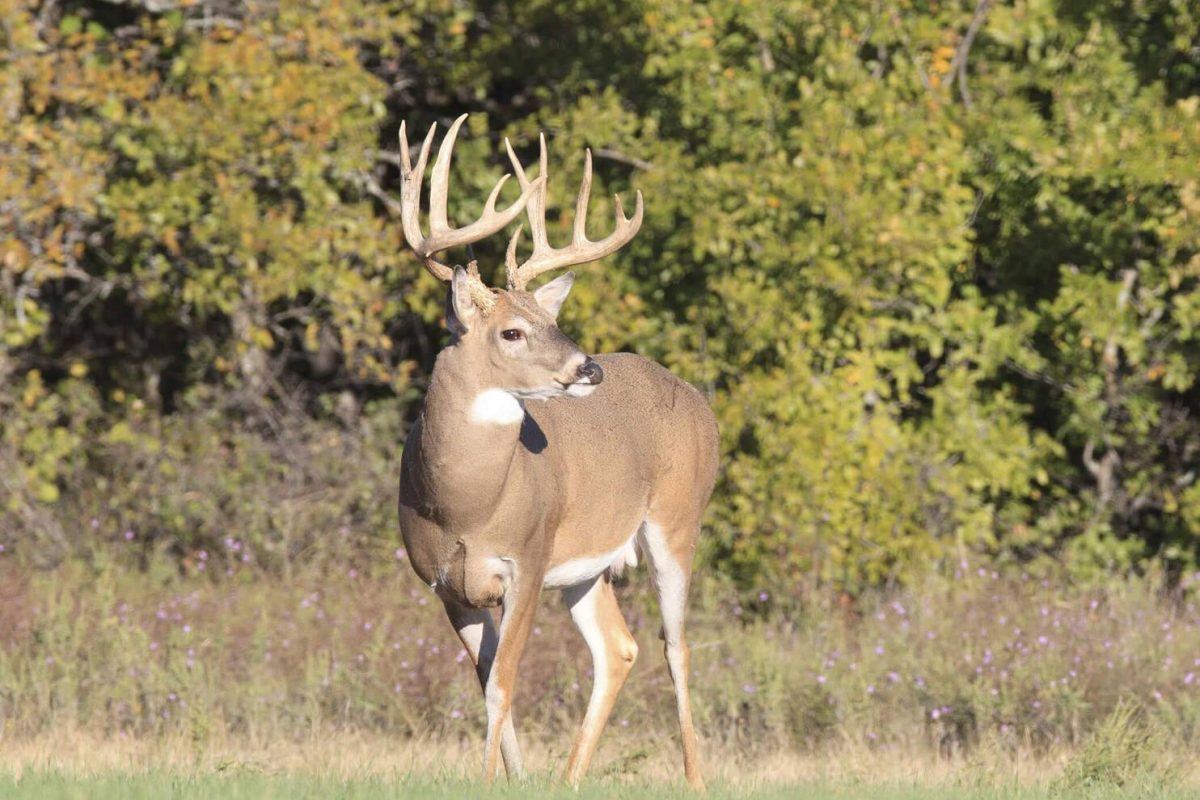Creating A Thriving Deer Food Plot in the Timber: Whitetails 365

Creating A Thriving Deer Food Plot in the Timber: Whitetails 365
As hunters, some of our favorite stands are in the timber, and most of us would rather be in the timber, right in the middle of a deer’s habitat. The crunchy fall leaves and the scent of acorns falling draw both hunter and deer. Here lies an opportunity to create a hidden oasis in the form of a deer food plot. This small haven, strategically carved from the timber, can turn into a magnet for deer.
While the idea of creating a food plot in the timber might seem daunting, it’s a rewarding endeavor that with proper planning and effort, can become a cornerstone of your land management and hunting practice. These food plots are often called “kill plots” as they are small, and should be hunted with discretion to keep the pressure off. Follow this recipe, and you will have success in these small kill plots.
Open the Canopy
The first obstacle, and arguably the most crucial, is clearing an adequate area. Sunlight is the lifeblood of any food plot, so finding a patch with enough natural light is paramount. Ideally, a northwest-facing hillside can capture a little more morning sunshine, but ultimately, choose a location that works best with your timber’s layout and accessibility.
Next, you will need to strategize the size of your food plot. This is completely up to you and your ambitions as to how big you want to make this. Whether you have a sprawling 40-acre timber or a more modest parcel, the ideal food plot size depends on your available space and labor capacity. For starters, consider a modest bow range area, perhaps 30 yards by 50 yards. Remember, you can always expand later. Use food plot architecture to your advantage to help keep wildlife moving through your food plot. You might try opting for a horseshoe or “L” design to encourage movement throughout your food plot, this will create shape and structure to keep deer moving.
Investing in Sweat and Strategy
Be prepared for some hard work, clearing timber doesn’t happen overnight. If the terrain allows, consider utilizing a tractor with an end loader to tackle the initial brush removal. This will significantly reduce your effort and set the stage for further development. If you can not access the area with a tractor, then you will likely have to use chainsaws, pull type brushcutters behind ATVs, or a walk-behind brushcutter. You can also use some chemical brush killer to kill small trees, brambles, and multifloral rose. Once killed, these are a little more manageable. This will take some patience and a lot of time, but you can begin to drop trees, remove brush, and open up the canopy of the timber. Remember, sunlight is essential for crops, so you will want to provide adequate sunlight hitting the timber floor.
Prepare a Good Seedbed
Building a good seedbed is key to success. You need your crop to come up to begin to thrive. Depending on your access and resources, you have different options. A chemical burndown can effectively control existing vegetation before planting. Opting for a tiller, if feasible, creates a fluffy and fertile bed for your seeds. My least preferred method, a “throw and grow” approach is possible, but be aware that the results might not be as impressive.
Once the vegetation is gone, and the ground is prepped, choose your preferred method for removing remaining debris. Herbicide can effectively deal with larger weeds, while a trusty hatchet can handle stubborn roots. Remember, navigate your equipment carefully through the timber to avoid unnecessary damage. If you can get equipment to your location, you can use an ATV or tractor to disc, seed, harrow, and roll or cultipack.
Choosing the Right Variety
The ideal crop for your food plot depends on several factors, including your soil conditions, and desired outcome. For a low-maintenance, perennial option, consider clover or alfalfa. These nutrient-rich legumes provide excellent forage for deer throughout the year, eliminating the need for frequent replanting. Once they’re growing, you can back off and monitor once or twice before the hunting season. You may benefit by spraying the grass out of your clover or alfalfa, or brushcutting once or twice. It is likely that heavy deer pressure is taking care of the weeds in the food plot. A healthy deer population will naturally keep weeds in check, creating a mutually beneficial ecosystem. Your role is to simply maintain the plot’s boundaries and monitor its overall health.
Beyond the Basics
Remember, creating a food plot is an ongoing process. Try it this year. You might want to expand or change the shape of it next year. Hang a trail camera, or two, and watch as the wildlife funnel through your area and linger. These trail cameras can help adapt your approach based on your observations, and will help you learn from your experiences. Enjoy the thrill of working the ground, watching your food plot grow, and then watching the deer and wildlife enjoy your land. With dedication and a touch of ingenuity, your food plot can become a testament to your commitment to deer management and a rewarding way to enrich your hunting experiences.
By Aaron McKinney
April 2024
Here is Last months issue of Whitetails 365
also here is next months issue Aswell
Management for a Thriving Deer Season in 2024: Whitetails 365
Here is this month’s digital version of the Iowa Sportsman
Or if you were looking for our Cattle/Dairy side of things


